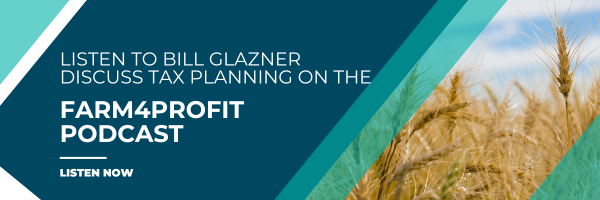Farmers Gain Access to Additional Natural Disaster and Pandemic Relief Funding
What You Need to Know about Applying for ERP 2 and PARP
The United States Department of Agriculture (USDA) recently announced an extension to the deadline for the application process for two key relief programs, the Pandemic Assistance Revenue Program (PARP) and the Emergency Relief Program Phase Two (ERP 2). In light of recent developments and recognizing the challenges producers may face in gathering the necessary documentation, the USDA has made the decision to extend the deadline to July 14, 2023.
The Emergency Relief Program 2 (ERP 2) targets producers of crops who suffered declines as a result of qualifying natural disasters such as drought, wind and fire.
The Pandemic Assistance Revenue Program (PARP) is aimed at producers of crops and livestock who suffered declines due to COVID-19. PARP represents more of a gap-fill for producers who have not already received payments under the existing assistance programs.
ERP 2 and PARP both require more initiative on the part of the producer compared to the first round of ERP. You will be responsible for determining eligibility and submitting the properly completed application. This differs from the first phase of ERP where most of the work was completed by the FSA based on information already available to them.
Applying for ERP 2 and PARP
The first phase of assistance programs was primarily based on yields as reported to the FSA. However, the second phase is more revenue driven with both of the new programs using formulas to determine a qualified reduction in allowable gross revenue.
For your ERP 2 application, you’ll use FSA Form 521.
Farmers seeking to apply for PARP will use FSA Form 1122.
The rules and application are similar but contain some key differences. Make sure to consider both when applying using this USDA comparison tool.
A Brief Look at Emergency Relief Program Phase 2 (ERP 2)
ERP 2 allows producers to establish a “Benchmark Year” using either 2018 or 2019, whichever was more profitable. The benchmark year is then compared to a “Disaster Year” including 2020 and/or 2021. You can apply for both 2020 and 2021 if they meet the qualifications for both years, but to qualify, it must meet the criteria for a qualifying disaster.
The Form 521 instructions walk producers through the various inclusions and exclusions as they calculate their allowable gross revenue for both the benchmark and disaster years. The calculation begins with amounts taken from the farm profit and loss schedule within your tax return. From there, various adjustments are made to the amounts shown on the specified lines of the schedule.
Note: ERP 2 excludes income from the sale of livestock and/or animal byproducts. This makes ERP 2 targeted specifically at producers of grains.
After the adjustments, you’ll arrive at an allowable gross revenue. This allowable gross revenue is calculated for both the benchmark year and disaster year and entered on Form 521. From there the FSA looks for a decline of 30% or more from the benchmark year (2018 or 2019) to the disaster year (2020 or 2021). This comparison calculates the total potential payment. From there, previous payments under ERP 1 and Coronavirus Food Assistance Program (CFAP) are subtracted before arriving at a final potential payment amount.
If you qualify for ERP 2 payments, you’ll be eligible for an initial payment of up to $2,000. However, the total amount of your ERP 2 payment will depend on the FSA’s calculation after they have taken into consideration all the applications. Additional considerations must be taken into account for producers who began farming after 2019 or who increased or decreased their farming capacity (farming acreage) from the benchmark year to the disaster year. If that’s your situation, consult an FSA agent.
A Brief Look at the Pandemic Assistance Revenue Program (PARP)
The PARP program functions similarly to ERP 2 aside from a few key differences. While you still have the option to choose either 2018 or 2019 as their benchmark year, only 2020 is eligible to be considered for the disaster year. Similar additions and exclusions are then used in calculating allowable gross revenue.
Most notably, where PARP differs from ERP is the inclusion of the sale of livestock and animal byproducts in the calculation of allowable gross revenue. Another key difference is that to qualify for PARP, you must only show a 15% decline in allowable gross revenue. While PARP may sound easier to qualify, the funds earmarked for PARP payments are only about $250 million of the total $1.2 billion allotted. It is expected that payments under PARP will be much more limited.
Making the most of ERP 2 and PARP
Both programs have the potential to provide you with some amount of relief, but the timeline is very short. Below are highlights for you to consider.
- Both ERP 2 and PARP programs are revenue-based calculations requiring several adjustments based on amounts reported on tax returns for years 2018 through 2022.
- ERP 2 excludes income from livestock while PARP includes it.
- Both programs look for a decline in allowable gross receipts from a selected benchmark year to a disaster year.
- Applications must be prepared by you as the producer and submitted to the FSA by July 14, 2023.
- Several resources are available from the USDA and FSA in determining eligibility and walking through the calculation. However, the ultimate calculation can be complex and producers with questions should consult an FSA agent.
To discuss your situation or for any support needed when applying for ERP 2 and PARP, contact an Adams Brown advisor.


